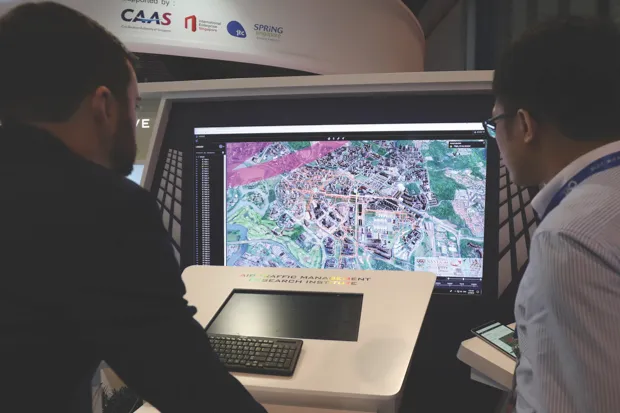The world’s first drone-delivered pizzas landed in November 2016, when Domino’s flew a pair of chicken-topped ones to a couple living 25km north of Auckland, New Zealand. Since then many businesses, including online retail giant Amazon, have investigated using drones, also known as unmanned aerial vehicles (UAVs) to carry products to customers.
It’ll probably be at least a few more years before fleets of delivery drones are buzzing over our heads, but we’re likely to see steps towards that being taken in the year to come. The most obvious one will be the appearance of the CE mark to show that any drone being sold to the public meets the new Europe-wide safety certification soon to be introduced.
Read more 2019 science breakthroughs:
“At the moment there aren’t any pan-European regulations for drones,” says Jonathan Nicholson of the Civil Aviation Authority. But there soon will be: the European Aviation Safety Agency (EASA) has written them and the final versions will be announced shortly.
“As well as rules for how and when drones can fly, which will be very similar to what we already have in the UK, EASA will also be introducing safety requirements for manufacturers. So there will be a CE mark for drones and to receive it any drone over 250g must comply with those requirements, which will include things like geofencing.”
Geofencing is GPS-based technology that creates a virtual boundary around specific locations, such as airports and prisons, to prevent drones from entering their airspace. But as Nicholson points out, part of the issue at the moment is that not every drone is fitted with geofencing, and it can be easily overridden in those drones that do. This can have devastating consequences, as seen when the closure of Gatwick airport caused chaos for Christmas travellers when two drones flew overhead.
But there’s a bigger problem than keeping drones out of airspace they shouldn’t be in – air traffic control. Whether they’re delivering pizzas, ferrying organs between hospitals or monitoring road accidents, piloted or autonomous drones will be operating in uncontrolled airspace, where it’s currently impossible for other aircraft – which could be anything from helicopters, to hot air balloons, or even military fast jets – to be made aware of their presence and safely avoid them.
“There’s no overall air traffic control system for uncontrolled airspace,” Nicholson explains. “In years to come, we will undoubtedly have a unified air traffic system where every aircraft [including drones] automatically transmits its location and flightpath data to everything else and all the aircraft in uncontrolled airspace avoid each other automatically. But we don’t have that yet, nobody does. There’s lots of work being done on it but, until we get to a position where a drone can be trusted to sense and avoid everything on its own, we have the ‘you can’t operate beyond visual line of sight’ rule, which stays in place.”
NASA is just one of the organisations developing an air traffic control system for drones (which it refers to as “unmanned aerial system traffic management”, or UTM for short) and has spent the last few years putting it through its paces. The third phase of testing, which involved keeping drones safely spaced out while detecting and avoiding other drones over moderately populated areas, was completed this spring. The fourth, and perhaps, final phase is scheduled to begin in 2019 and will see if NASA’s UTM system can integrate drones into more populated urban areas in order to test “package delivery, infrastructure inspection, aerial photography, news gathering, public safety and first responder operations”.

Closer to home, UK firm Aviation Angel has partnered with NATS (National Air Traffic Services) to develop UTM systems that can be integrated with conventional air traffic control technology and procedures.
As work continues on the technical aspects of identifying unmanned aircraft, their flightpaths and the software they’ll require to sense and avoid each other, 2019 will see further testing of the systems currently in development. But the coming year is also likely to see changes to flight regulations in order to make commercial drone use possible over urban areas.
Currently, the drone code prohibits them from flying above 120m and beyond the operator’s line of sight. Crucially, they also can’t be flown within 50m of people and property, or within 150m of crowds and built-up areas. It’s likely some, perhaps all, of those rules will have to change if drone use, particularly for deliveries, is to become viable in cities.
In short, 2019 could turn out to be an important year for the drone industry. Trials of various UTM systems will be taking place in the US, Switzerland, Spain and Japan. Recommendations concerning the future use of drones will be made to governments and aviation authorities based on the outcomes. If the UTM systems are proven to be effective, there’s a chance we could see more than pizzas being delivered by drone in 2020.

Follow Science Focus onTwitter,Facebook, Instagramand Flipboard